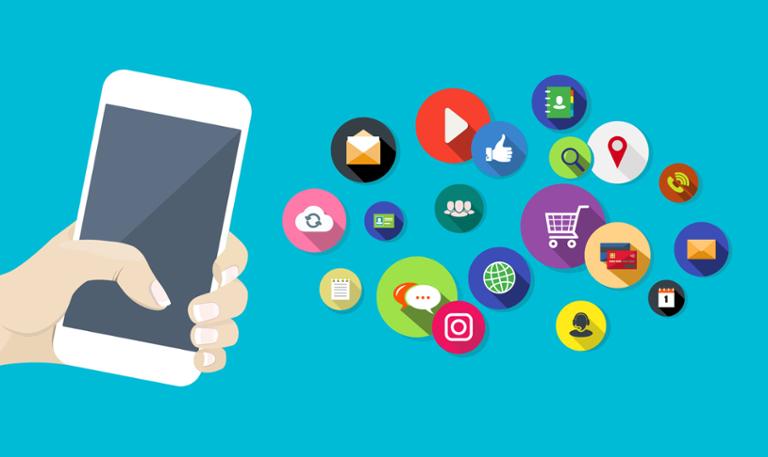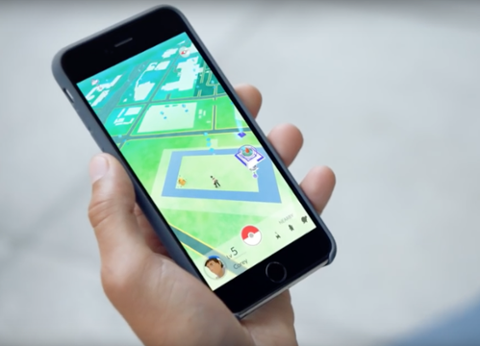 App developers: here’s a bit of data that might freak you out. According to comScore’s 2017 U.S. Mobile App Report, most of the major channels for app discovery—including app stores, word-of-mouth, and advertising—have seen an annual decline in engaged users. For example, the amount of people finding apps via an app-store search declined from 21 percent in 2016 to 20 percent this year. Highlighted app-store spots, word-of-mouth via friends and family, and website marketing also saw identical one-percent dips. Discovery via print reviews, television shows, and browser ads remained level year-over-year. What does this mean for developers? There’s no “hot” channel for app discovery; getting users to download your product will likely remain a multi-channel grind well into the future. The report does feature some good news, however. Millennials are more willing than older folks to pay cash for apps, with 20 percent purchasing an average of one app per month. That cohort (which the report defines as ages 18-34) is also more willing to make in-app purchases; some 46 percent have made at least five in-app purchases annually. So that’s good news for any developers who despair over whether smartphone owners are actually willing to pay legal tender for the apps they consume. Smartphone users are spending roughly half their smartphone time in a single app. The majority of users access 20 or fewer apps per month—especially older ones, nearly a third of whom stick to 10 or less. As other studies have highlighted over the past few years, the most popular apps across all age groups remain the usual suspects: Facebook, YouTube, Messenger, Snapchat (in the case of users aged 18-24), Instagram, and Google Search. For developers, reports like this may underscore how, despite increasingly powerful phones and new technologies such as augmented reality (AR), the smartphone-app game remains substantially unchanged: the best way to succeed is to make a well-designed, tightly engineered app—and then grind through the marketing and distribution of said app. But at this point, most developers should know what they’re in for.
App developers: here’s a bit of data that might freak you out. According to comScore’s 2017 U.S. Mobile App Report, most of the major channels for app discovery—including app stores, word-of-mouth, and advertising—have seen an annual decline in engaged users. For example, the amount of people finding apps via an app-store search declined from 21 percent in 2016 to 20 percent this year. Highlighted app-store spots, word-of-mouth via friends and family, and website marketing also saw identical one-percent dips. Discovery via print reviews, television shows, and browser ads remained level year-over-year. What does this mean for developers? There’s no “hot” channel for app discovery; getting users to download your product will likely remain a multi-channel grind well into the future. The report does feature some good news, however. Millennials are more willing than older folks to pay cash for apps, with 20 percent purchasing an average of one app per month. That cohort (which the report defines as ages 18-34) is also more willing to make in-app purchases; some 46 percent have made at least five in-app purchases annually. So that’s good news for any developers who despair over whether smartphone owners are actually willing to pay legal tender for the apps they consume. Smartphone users are spending roughly half their smartphone time in a single app. The majority of users access 20 or fewer apps per month—especially older ones, nearly a third of whom stick to 10 or less. As other studies have highlighted over the past few years, the most popular apps across all age groups remain the usual suspects: Facebook, YouTube, Messenger, Snapchat (in the case of users aged 18-24), Instagram, and Google Search. For developers, reports like this may underscore how, despite increasingly powerful phones and new technologies such as augmented reality (AR), the smartphone-app game remains substantially unchanged: the best way to succeed is to make a well-designed, tightly engineered app—and then grind through the marketing and distribution of said app. But at this point, most developers should know what they’re in for. App Developers, This Data Might Freak You Out
 App developers: here’s a bit of data that might freak you out. According to comScore’s 2017 U.S. Mobile App Report, most of the major channels for app discovery—including app stores, word-of-mouth, and advertising—have seen an annual decline in engaged users. For example, the amount of people finding apps via an app-store search declined from 21 percent in 2016 to 20 percent this year. Highlighted app-store spots, word-of-mouth via friends and family, and website marketing also saw identical one-percent dips. Discovery via print reviews, television shows, and browser ads remained level year-over-year. What does this mean for developers? There’s no “hot” channel for app discovery; getting users to download your product will likely remain a multi-channel grind well into the future. The report does feature some good news, however. Millennials are more willing than older folks to pay cash for apps, with 20 percent purchasing an average of one app per month. That cohort (which the report defines as ages 18-34) is also more willing to make in-app purchases; some 46 percent have made at least five in-app purchases annually. So that’s good news for any developers who despair over whether smartphone owners are actually willing to pay legal tender for the apps they consume. Smartphone users are spending roughly half their smartphone time in a single app. The majority of users access 20 or fewer apps per month—especially older ones, nearly a third of whom stick to 10 or less. As other studies have highlighted over the past few years, the most popular apps across all age groups remain the usual suspects: Facebook, YouTube, Messenger, Snapchat (in the case of users aged 18-24), Instagram, and Google Search. For developers, reports like this may underscore how, despite increasingly powerful phones and new technologies such as augmented reality (AR), the smartphone-app game remains substantially unchanged: the best way to succeed is to make a well-designed, tightly engineered app—and then grind through the marketing and distribution of said app. But at this point, most developers should know what they’re in for.
App developers: here’s a bit of data that might freak you out. According to comScore’s 2017 U.S. Mobile App Report, most of the major channels for app discovery—including app stores, word-of-mouth, and advertising—have seen an annual decline in engaged users. For example, the amount of people finding apps via an app-store search declined from 21 percent in 2016 to 20 percent this year. Highlighted app-store spots, word-of-mouth via friends and family, and website marketing also saw identical one-percent dips. Discovery via print reviews, television shows, and browser ads remained level year-over-year. What does this mean for developers? There’s no “hot” channel for app discovery; getting users to download your product will likely remain a multi-channel grind well into the future. The report does feature some good news, however. Millennials are more willing than older folks to pay cash for apps, with 20 percent purchasing an average of one app per month. That cohort (which the report defines as ages 18-34) is also more willing to make in-app purchases; some 46 percent have made at least five in-app purchases annually. So that’s good news for any developers who despair over whether smartphone owners are actually willing to pay legal tender for the apps they consume. Smartphone users are spending roughly half their smartphone time in a single app. The majority of users access 20 or fewer apps per month—especially older ones, nearly a third of whom stick to 10 or less. As other studies have highlighted over the past few years, the most popular apps across all age groups remain the usual suspects: Facebook, YouTube, Messenger, Snapchat (in the case of users aged 18-24), Instagram, and Google Search. For developers, reports like this may underscore how, despite increasingly powerful phones and new technologies such as augmented reality (AR), the smartphone-app game remains substantially unchanged: the best way to succeed is to make a well-designed, tightly engineered app—and then grind through the marketing and distribution of said app. But at this point, most developers should know what they’re in for. 

